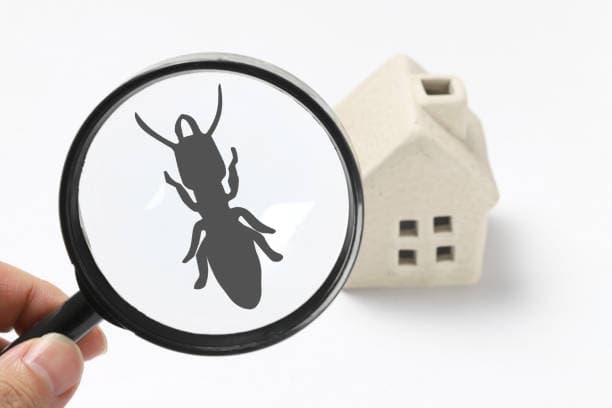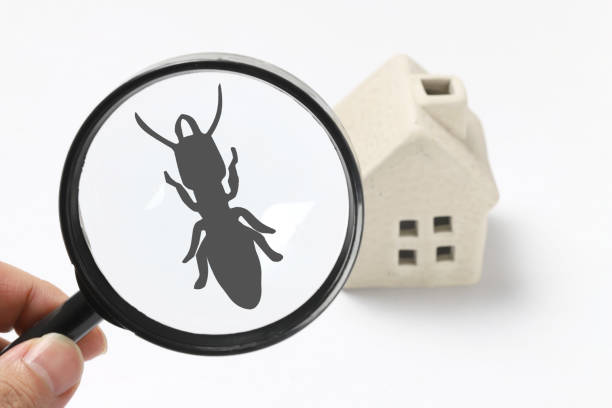
22 Feb The Hidden Dangers of Winter Pest Infestations
Many people assume that pests disappear for the season when the temperature drops. Unfortunately, winter is not a break from infestations; it is a time when pests seek shelter in warm, indoor environments—often within homes and businesses. These unwelcome guests can cause property damage, spread diseases, and cause discomfort to homeowners. Understanding the hidden dangers of winter pest infestations, identifying common seasonal pests, and knowing how to prevent and eliminate them are key to maintaining a pest-free home during the colder months.

Types of Winter Pests
Several pests remain active in winter, searching for warmth, food, and shelter. Some of the most common winter pests include:
1. Rodents (Mice and Rats)
Mice and rats are among the most persistent and destructive winter pests. As temperatures drop, they seek out warm areas with an ample food supply, making attics, basements, and walls prime nest locations. Rodents can chew through insulation, wiring, and even wood, increasing the risk of electrical fires and structural damage. Additionally, they can carry diseases such as hantavirus and salmonella, posing serious health risks.
2. Cockroaches
Cockroaches thrive in warm, humid environments and often take refuge in kitchens, bathrooms, and basements during winter. These pests are notorious for spreading bacteria and allergens, exacerbating asthma and other respiratory issues. Once an infestation begins, cockroaches multiply rapidly, making them challenging to eliminate.
3. Spiders
While many spiders are harmless, some species, like the brown recluse and black widow, are venomous and can pose health risks. Spiders seek shelter in dark, undisturbed spaces such as basements, attics, and closets. They often enter homes searching for prey, particularly other insects that have also found their way indoors.
4. Silverfish
These small, wingless insects thrive in damp, dark areas like basements and bathrooms. While they do not pose direct health risks, they can damage paper, books, clothing, and wallpaper as they feed on starches and carbohydrates.
5. Termites
Though termites are more commonly associated with warmer seasons, some species, such as subterranean termites, remain active in winter by burrowing deeper into the ground or seeking shelter in heated structures. Their damage is often hidden but can be severe, weakening the structural integrity of buildings over time.
6. Cluster Flies and Other Overwintering Insects
Cluster flies, stink bugs, and boxelder bugs enter homes to escape the cold and remain dormant until spring. While they do not cause structural damage, they can be a nuisance when they gather in large numbers and may emit unpleasant odors when disturbed or crushed.
How to Avoid Winter Pest Infestations
Preventing a pest infestation during winter requires proactive measures. Here are some essential tips to keep pests out:
1. Seal Entry Points
Inspect the exterior of your home for cracks, gaps, and holes where pests could enter. Seal any openings with caulk or weather stripping, paying special attention to areas around doors, windows, pipes, and vents.
2. Keep Food and Trash Secure
Pests are attracted to accessible food sources. Store food in airtight containers, promptly clean up crumbs and spills, and take out the trash regularly. Consider using trash cans with tight-fitting lids to prevent rodents and insects from foraging.
3. Reduce Moisture
Many pests, including cockroaches and silverfish, thrive in damp environments. Use dehumidifiers in basements and bathrooms, fix leaks promptly, and ensure proper ventilation in moisture-prone areas.
4. Maintain Cleanliness
Clutter provides hiding spots for pests. Keep storage areas organized, vacuum regularly, and avoid accumulating unnecessary items in basements, attics, and garages.
5. Inspect and Maintain Firewood Storage
If you store firewood, keep it at least 20 feet away from your home and elevate it off the ground. This helps reduce the likelihood of pests, such as termites and rodents, entering.

How to Get Rid of A Winter Pest
If you already have a pest problem, taking swift action is essential. Here are steps to eliminate infestations:
1. Use Traps and Baits
Snap traps, glue traps, and bait stations can be effective for rodents. Place them along walls and near entry points where rodent activity is observed. Be sure to check and dispose of trapped pests regularly.
2. Apply Insecticides and Natural Repellents
For cockroaches and spiders, insecticidal sprays, boric acid, and diatomaceous earth can help eliminate infestations. Natural remedies such as peppermint oil and vinegar can also deter certain pests.
3. Vacuum and Clean Infested Areas
Regular vacuuming can help remove cockroach eggs, spider webs, and other pest debris. Dispose of vacuum bags immediately to prevent re-infestation.
4. Monitor and Prevent Future Infestations
After eliminating pests, continue to monitor problem areas and reinforce preventive measures. Routine inspections and seasonal maintenance can help keep your home pest-free year-round.
Self Pest Control
If left unaddressed, winter pest infestations can cause significant health and property risks. Preventive steps, such as sealing entry points, reducing moisture, and maintaining cleanliness, can help deter pests. If an infestation occurs, using traps, cleaning thoroughly, and seeking professional help when necessary will ensure a pest-free winter season. By staying vigilant and proactive, homeowners can protect their living spaces from the hidden dangers of winter pest infestations.

